The idea for a hopped cider recipe came to me after switching my tap from a pale ale to a fresh hard cider. When I switched the tap, I didn’t bother to flush the line and I ended up with a mix that was surprisingly delicious. So, I decided it was time to change things up and test a hopped cider recipe.
Result? A fantastic fresh tasting hard cider with a subtle hoppy flavor and floral aroma. This cider is dry hopped, which means the hops are added in the fermenter and never boiled, so it does not have the strong bitter flavor like an IPA but adds nice body and mouthfeel.
The dry hopped cider also tastes sweeter without additional back sweetening. For me, this is great because I enjoy a semi-sweet hard cider but really try to avoid as much sugar as possible.
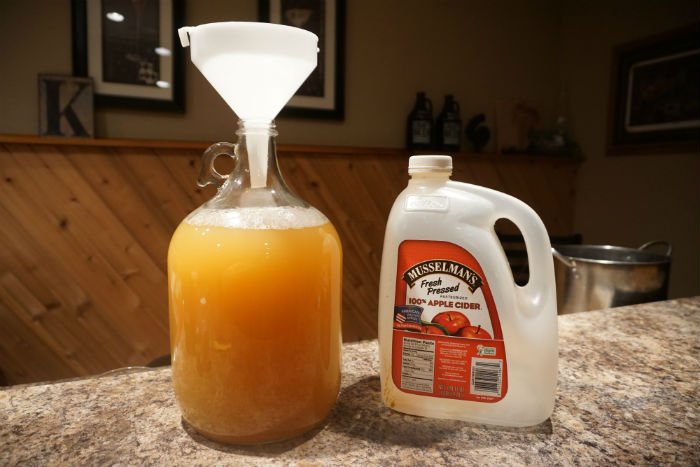
Hopped Cider Ingredients
Juice Selection:
For this batch of cider, I used basic store bought pasteurized 100% apple juice with an original gravity of 1.046 SG.Hop Selection:
Cascade hops are known for their citrus flavors and floral aromas.Yeast Selection:
I chose to use an ale variety yeast, Nottingham, which finishes semi-sweet and adds notes of fruity flavors that compliment the cider well.Yeast Nutrient:
The yeast nutrient and energizer will improve the health of the yeast which will produce finer tasting alcohol (fewer fusel alcohols ). When making a cider, yeast nutrient or DAP, is typically added in the beginning to increase the amount of dissolved nitrogen in the juice.Hydrometer & ABV Info:
Original Gravity: 1.046 SG
Target Final Gravity: 1.000 SG
Expected ABV: 6%
Five Essential Pieces of Equipment





How to Make Hopped Apple Cider:
If you are new to cider making, start by reviewing the basic cider making instructions found here.
Preparing Cider for Fermentation:
- Clean and sanitize all equipment
- Take a hydrometer reading of the fresh cider
- Add yeast nutrient to the fermenter, check the label for dosage
- Pour the apple juice into the fermenter
- Pitch the yeast and attach the airlock
Fermentation:
Depending on the OG of the juice, the cider should finish fermenting in about two weeks when fermenting at 68F. Sample SG to get a true gauge of the progress of fermentation. A time frame is less important than a quality fermentation.
How I Dry Hopped the Cider:
Once the cider finished fermenting, it was racked and dry hopped.
To dry hop, I placed one ounce of Cascade pellet hops into a sanitized hop bag and tossed it into the fermenter. The hop bag reduces the amount of sediment and made clearing the hops from the cider easier in the end.
I allowed the cider to dry hop for 5 days, giving the fermenter a gentle swirl each day. Then I cold crashed the fresh hopped cider for two days.
How long you dry hop depends on your personal taste and can be adjusted accordingly but from my beer brewing experience, dry hopping shouldn’t go much past two weeks.
Finishing the Dry Hopped Cider:
Once the cider had taken on the best of the hop flavors, I removed the hop bag. The dry hopped cider could now be bottled but I chose to go straight to a keg. This allowed me to add just a touch of apple juice concentrate for back sweetening and added apple flavor.
Keep in mind, the hops will add body and flavor to the cider so if you back sweeten, it won’t take much.
Cascade Hopped Hard Cider Recipe
Equipment
Materials
- 5 gal Apple Cider
- 1 pack Nottingham Ale Yeast
- 1 tsp Yeast Nutrient
- 1 oz Cascade Hops
Instructions
- Clean and sanitize all cider making equipment before starting.
- Pour the Apple juice into the fermenting vessel.
- Take a hydrometer reading to measure the gravity and record.
- Add yeast nutrient if desired.
- Pour the yeast into the fermenter.
- Close the fermenter and install an airlock filled with sanitizer.
- Allow the cider to ferment in a cool and dark place for about two weeks.
- Pour the hops into a hop bag and place the hop bag into the fermenter for about a week.
- Cold crash, rack and bottle.
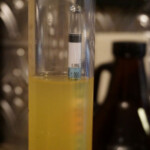
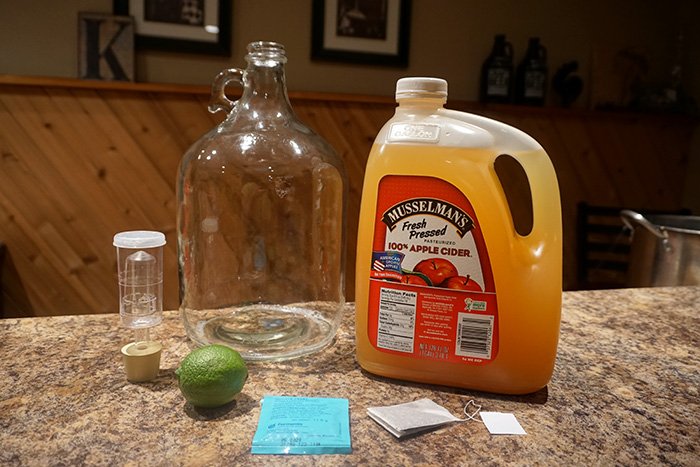
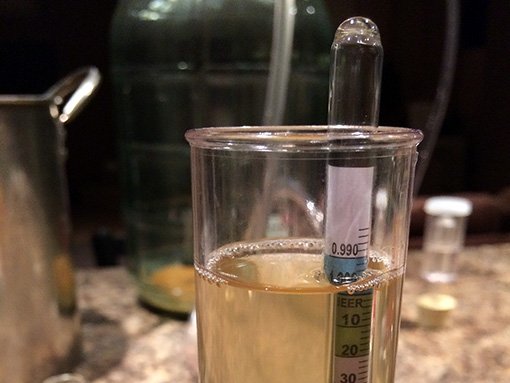
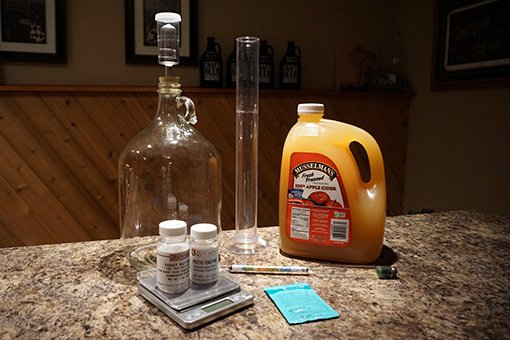
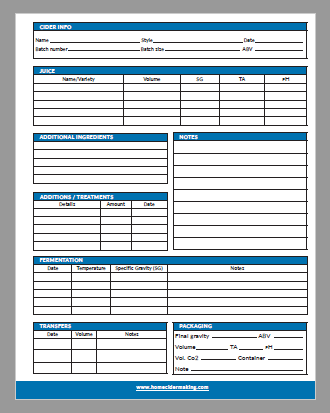
Great post. Cascade are a great hop to use, but in my trials Citra has truly stood out as a fantastic addition for dry-hopping, but like Cascade, any Citrus-flavor imparting hop is a good guide to start from. I cannot stress enough that if you can find Freeze-dried whole hop flowers, this is HIGHLY preferable to pressed hop pellets (I hear they may no longer freeze-dry Citra due to shorter shelf life, but look around). I find that pressed pellets tend to be more Alpha Acid forward (bittering) compared to the aromatics that you want with dry hopping. As you stated, the dry-hopping will focus more on providing more aromatics than bittering no matter which hop format or variety you choose.
Speaking of bittering, I took a quick cruise through your website and saw no references to evaluating or adjusting acid content. Since your juice sources are primarily store-purchased sweet cider or apple juice, it’s important to note that these juices have a significant lack of Malic acid compared to traditional cider blends (which are often prepared from both sweet and baking apples, the latter being higher in Malic acid). One of the easiest ways to round out your cider without significant complex methods would be to purchase a food-grade acid at your local home-brew supply store. In Cider, acid (Malic, Citric, Tartaric) additions do to cider what hops do to beer – they balance the sweetness of the malts. Depending on your taste preferences and the type of acid chosen, 1-3 teaspoons per 5 gallons will usually provide the effect necessary. You may wish to consider this for a range of ciders that you make, and not just dry-hopped. My suggestion would be Malic first, then maybe Citric or a combo of the two. I would stay away from Tartaric acid, though a blend of all three would be acceptable if that’s all you can find.
Now – the reason I mention the straight acid addition is because in dry-hopping, the alpha acids in the hops can go a long way in replacing the need for adding additional Malic and Citric acids. The nearly double Alpha Acid content in Citra (compared to Cascade) coupled with a longer dry-hop in secondary (read, 2-4 weeks) yields a fantastically complex blend of aromatics, sweetness and a light, balanced “sourness” from the alpha acid without the typical Wort boil needed to extract these in beer like an IPA.
If you ever have a chance to revisit dry-hopped Cider, please let me know, I would love to read some more of your trials in this area!
Thanks for your detailed insight, I really appreciate your comment!
I do plan to try more hopped ciders and will definitely look for freeze-dried Citra or even pellet Citra. I enjoy experimenting with just about anything I can get my hands on!
Speaking of experimenting, I just picked up an acid test kit and an acid blend (Malic, Citric, and Tartaric) last week and plan to experiment with it soon. From what I have read, just a small amount can have a major impact.
I have been mainly using store bought juices because I know what to expect from the base hard cider and then I can really see how the adjustments impact the finished product. Also, it’s much easier to source!
Hopefully next year I can find a local orchard with cider varieties and begin working on a more traditional cidermaking skillset.